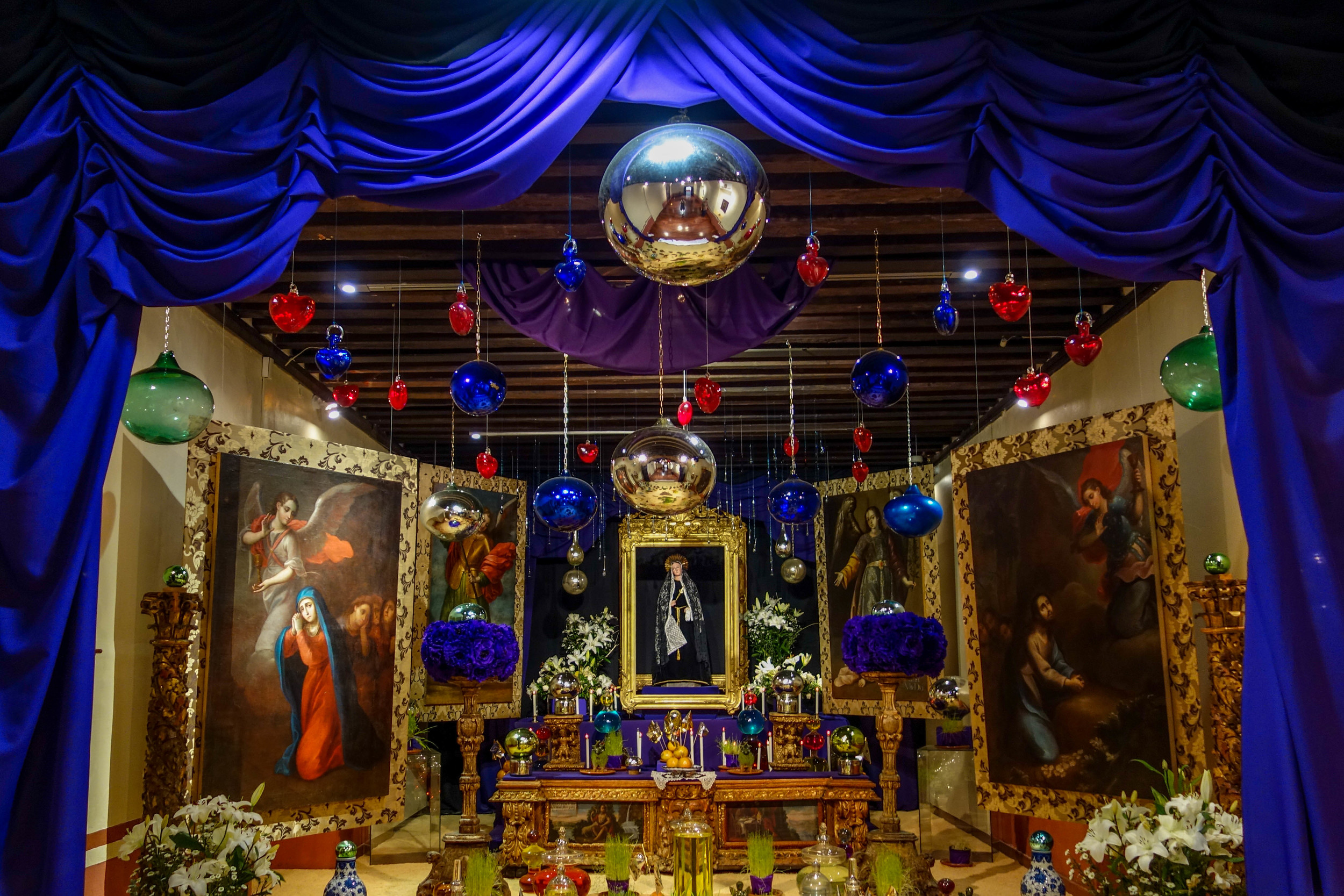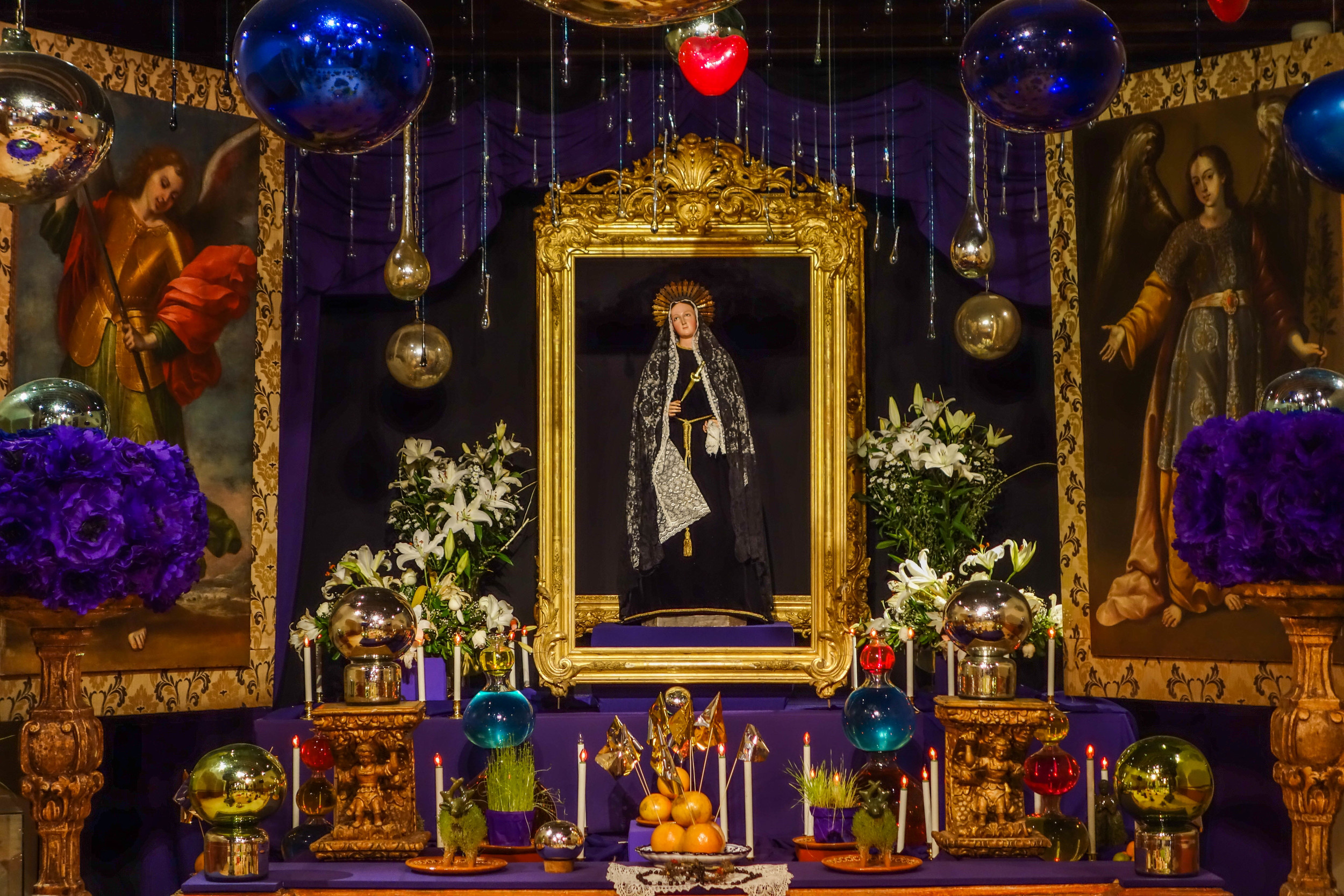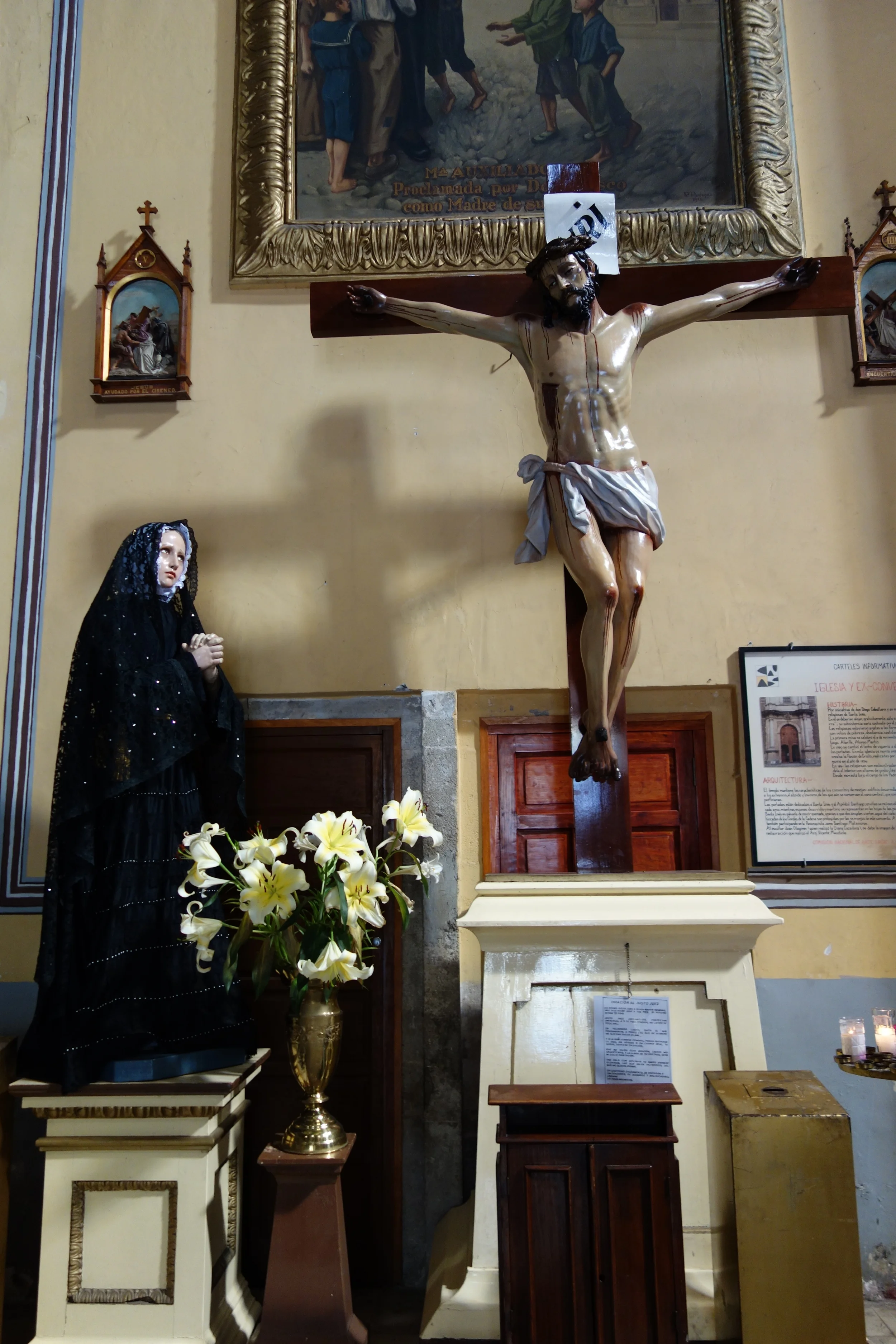Decoding Our Lady of Sorrows in Mexico City
Our Lady of Sorrows (Virgen Dolorosa) is a common representation of Mary in Mexican churches. Devotion to her came from Spain during the colonial period and this is still reflected in her clothes- she’s usually dressed as a wealthy Castilian widow.
During Holy Week these icons take on a much more significant role- after Good Friday Virgen Dolorosa is frequently known as Virgen de la Soledad since she was alone after Jesus’ death. She’s often the only uncovered icon in churches after all other artwork has been veiled in purple. Sometimes she’s moved outside the church to a special altar.
This altar was set up in the Museo de El Carmen and included information on the meanings behind the special Holy Week decorations you see around town. This was the only altar I saw that was this elaborate. Most had a few of these symbols around the icon with women selling juice, water or flowers.
Lilies (pictured): The virginal purity of Mary.
Fresh Camomile (variation): Represents humility (in the green stalks) and beauty of body and soul (the yellow flowers). Bunches of chamomile were more common around the city and were delivered in bushels to the cathedral.
Bitter Oranges: Mary’s sorrow. Sometimes these are also painted gold to symbolize joy in Jesus’ resurrection.
Gold Balls: Joy in the resurrection (see oranges above).
Red Hearts: The physical sacred heart of Jesus, a symbol of divine love and suffering.
Urns of Liquid: The sweet tears of Mary. This is also why juice and sometimes ice cream or popsicles are served.
Sprouted wheat: Represent Jesus as the eucharist (bread). At a few churches I saw Chia Pets.
Purple paper flowers and purple drapes: Mourning, pain and penance. The color of Lent.
One sword through the heart of the icon (pictured): The pain of Mary watching her child die on the cross.
Seven swords through the heart of the icon (variation): The seven sorrows of Mary.
On Good Friday there are funeral processions that include the Santo Entierro, or holy burial in effigy. (The one pictured here is from the baptistry at the Metro Cathedral.) The icon of the Virgen de la Soledad is often included in the procession.
After Good Friday, some people burn effigies of Judas or explode them with fireworks. I saw a few of these at the Mercado Sonora (famous for its witchcraft and Sanataria supply stalls) but didn’t recognize their purpose because they were in the form of little red devils.




